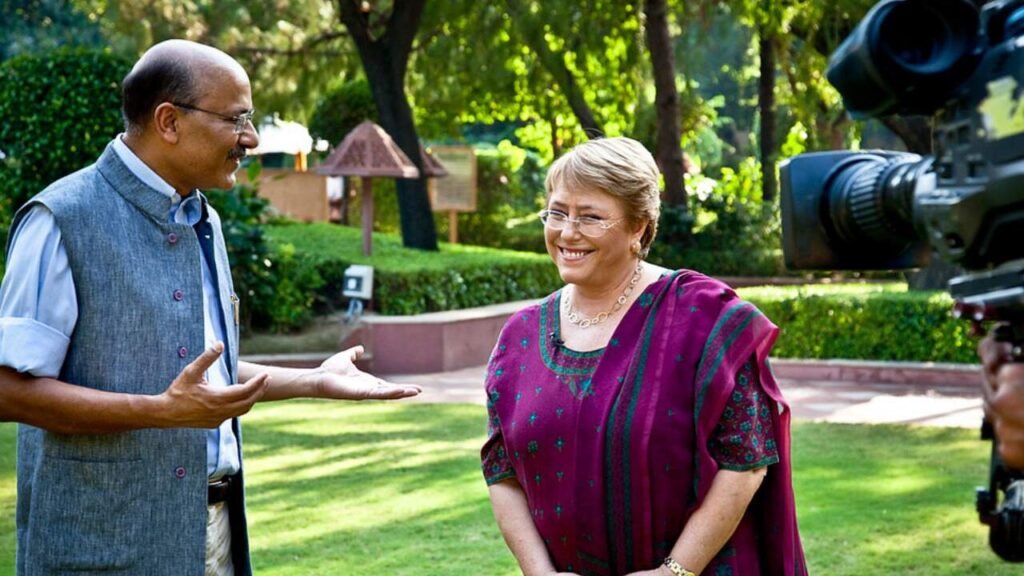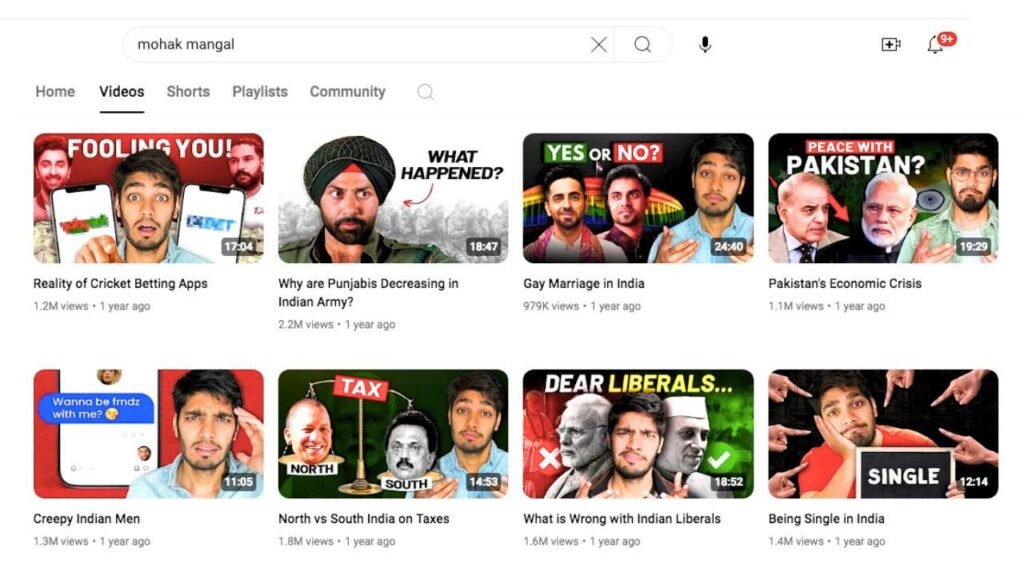
Table of Contents
Did you know, you can use your smartphone to know India’s real stories? The stuff that mainstream media is ‘not very’ interested in broadcasting or publishing. When it comes to accurate news, your pocket-size phone can be a fully functioning newsroom.
In the digital era, alternative media and not traditional ones are trying to reshape the landscape of information in the country. They are on a mission to uphold the tenets of journalism, reaffirm the role of media in democracy and present facts and stories that the people deserve to know.
Unbiased, non-partisan, independent, and not owned by big corporations, alternative media offers a new perspective. It challenges the narratives popularized by the mainstream media, strongly supports press freedom, and helps us think and consider issues that truly matter.
The Rise of Alternative Media

In a sea of debate over political dramas, it’s the real-life stories that often get overlooked. But there’s a change in the air.
Think beyond the traditional sources of news or information. Forget the usual newspapers, journalists on television or other newsrooms. Alternative Media now represents journalism’s very core —vibrant, raw, and real. It tells the truth and seeks to inform and not influence.
What does alternative media include? Digital content like blogs, podcasts, and sites like YouTube and Instagram. Acting as the fourth pillar of democracy, it is truly of the people, by the people, and for the people. It distances itself from the mainstream media and information overload and supports freedom of the press in India. It presents us with the stories that matter by highlighting the voices of the people. Less about corporate ownership or backing, and more about backing the truth.
Let’s take a look at some examples:
- ScoopWhoop Unscripted – From offering fresh perspectives on societal issues to exploring topics untouched by mainstream media, the team is making information dissemination fun.
- The Wire – A leading online publication that consistently and successfully challenges the status quo to present an in-depth analysis of politics and society.
- NewsClick – This portal, in particular, is renowned for its grassroots journalism. They offer exclusive and extensive coverage of labour movements and civil rights issues.
- Quint Neon – With topics ranging from mental health to internet culture, Quint Neon has a youth-oriented approach and is more popular amongst young people.
- ThePrint – A formidable force in India’s alternative media landscape, ThePrint founded by veteran journalist Shekhar Gupta is known for its data-driven analyses and insightful perspectives on politics and societal issues.
These platforms exemplify how alternative media in India is thriving on the pillars of citizen journalism and digital content.
Alternative Media in the Digital Age
What does the digital revolution in the Indian media look like? Picture this – if the Coliseum was digital, sites like YouTube and Instagram would be the gladiators.
Media as we know it has changed. Gone are the days when news meant sitting in front of the television or reading the newspaper.
Citizen journalism has arrived. Thanks to social media, now regular people are turning into reporters and videographers. Newsroom is available at a click and through multiple sources. Anyone with a smartphone can easily turn into a journalist. No more is news fed by a select few! Alternative media is cutting through the clutter to support media diversity and uphold Freedom of Speech and Expression. Every shared video and hashtag can potentially spark a revolution and lead to digital debates.
While this has democratized the media in a way and enhanced the freedom of the press, it is not without serious risks. Journalists are bound by certain ethics and standards such as truthfulness, accuracy, objectivity, and fact-based communication, etc. If they report incorrect news, they can be held accountable. But the same is not true for those posting videos on newsworthy events. They can be held accountable by the content policy or community guidelines of the platform they are posting on, but these are not always effective.
Which Platforms Are Shaping Alternative Media?

Of all the social media platforms, which one has been instrumental in the growth of alternative media? It’s YouTube!
YouTube is playing a crucial part in the digital news ecosystem by bolstering alternative media in India. It is ‘the’ platform for those not a part of the mainstream media. In India, an astonishing 87% of YouTube users report that they rely on the platform for news events.
YouTube is a great enabler. It is helping ordinary people become reporters by transcending traditional entry barriers to journalism. The democratization of information has led to increased access to stories from different parts of the country.
Let’s take a look few famous YouTubers:
- Dhruv Rathee – Who doesn’t know him? This YouTuber is famous for his exposé and informative videos on complex political issues. With a YouTube subscriber base of 20.1 M, he has made a name for himself by presenting nuanced takes on current events. He often addresses topics that mainstream media shies away from due to political sensitivity and their leaning.
- Soch by Mohak Mangal – Soch means ‘think’ and doing justice to the name, this channel led by a former economist with the World Bank and the Poverty Action Lab, Mohak Mangal provides a detailed analysis of social and economic issues affecting India. He offers well-researched explanations and analyses that are rarely covered with such depth by traditional media. 3.23M! Yes, that’s how many people have subscribed to his YouTube channel.
- Think School: ‘Making Dent in the Indian Education System’ is their motto! Built by two engineers, they are on a mission to teach skills that benefit the people. Through creating engaging content ranging from business case studies to decoding political scenarios, they have garnered over 3.8M followers on YouTube. But, that’s not all. They are also providing free and affordable courses.
Their collective subscribers and engagement make it very clear that people have accepted them as credible sources of news events and consider their online news portals. The content creators are utilizing their platforms to provide value to the people by discussing topics from environmental issues and political corruption to societal reforms and cultural debates. The impact they are making showcases the power and potential of alternative media to engage people on critical issues.
Press Freedom and Alternative Media: The Pillars of New Age Journalism
From busting fake news to highlighting stories untouched by mainstream media, alternative media is where you can find the truth behind real issues.
In India, it reflects a spectrum of political ideologies. While some support the ruling parties, others amplify the opposition’s voice. This diversity in reporting showcases a vibrant, albeit divided, media landscape. But again, the division encapsulates the essence of press freedom—letting diverse viewpoints coexist and challenge each other in front of the people. Hence, alternative media reinforces the essence of press freedom.
But, largely, it uncovers hidden stories, informs people about the happenings in the country, and presents news neutrally. In the truest sense, it understands that the media should be functioning as the fourth pillar of democracy.
With every blog or video published by the alternative media, India’s press landscape is transforming. All at once, it is fostering inclusivity, upholding diversity, challenging inequality, and making press freedom a tangible reality.
Challenges Facing Alternative Media
The clicks, views, and appreciation don’t come easy. The competition is high and social media algorithms make life challenging. Only the right set of hashtags doesn’t make content viral and the path is riddled with digital potholes.
Other hurdles like financial sustainability, censorship, lack of resources, getting audiences to trust you, and the ever-present threat of fake news that spreads faster than wildfire.
For alternative media, every day is a new battle for maintaining their integrity and freedom. Importantly, competitors are the established mainstream media giants. It is not easy to stand tall and consistently find and put out authentic and relevant news. Alternative media strives to persist, but the future will depend on its ability to continue truthful reporting, engage tech-savvy audiences, and of course, navigate regulatory restrictions.
The Role of Citizen Journalism

Dear reader, this is where you come in!
Citizen journalism can turn viewers into active participants and spectators into storytellers. Thanks to social media, every voice can be heard. It is not just about reporting, every tweet you post, the story you share or even the act of sharing your opinions in the comment section contributes to the democratic process. These interactions ensure transparency and even enhance the role of the media in democracy.
Citizen journalism assures us that tweets, posts, and uploads are building blocks of a more informed society and that every whisper has the potential to echo in the power corridors.
We, the people, can support and strengthen the democratic fabric of the media!
Future of Alternative Media in India
From spirited solo vloggers who challenged the wrongdoings of a corrupt politician to crowd-funded news portals that are revolutionizing local news, alternative media is making its mark in the world of Indian journalism.
The success stories are not just about competing with the traditional media giants or grabbing headlines. In the real sense, it is about shaping public policy, bringing forth issues relevant to all, and even impacting critical policy decisions.
What’s next? What does the future of alternative media in India look like? Robust? Yes. Supported by technological advancements, encouraged by an increasing appetite for authenticity, and guided by the storytelling approach, the future is bright.
Conclusion
Remember the days when the news was unbiased and served straight up? That’s the essence we’re rediscovering through alternative media, turning every citizen into a potential journalist and every smartphone into a newsroom.
Alternative media is offering a platform for voices that were once drowned out by mainstream narratives, marking a new era of press freedom in India.
As we step further into this new age, let us as the audience, champion the truth seekers and question the mainstream. Being the consumers of news, we must strengthen authentic and ethical journalism.
Come, let’s dive into the vibrant world of alternative media, and mould a future where news isn’t just consumed but actively created to empower democracy.
To keep getting clarity on such interesting topics, please subscribe to Clarity Circuit.
Recommended Articles
If you found this topic interesting, you might also enjoy reading these articles:


